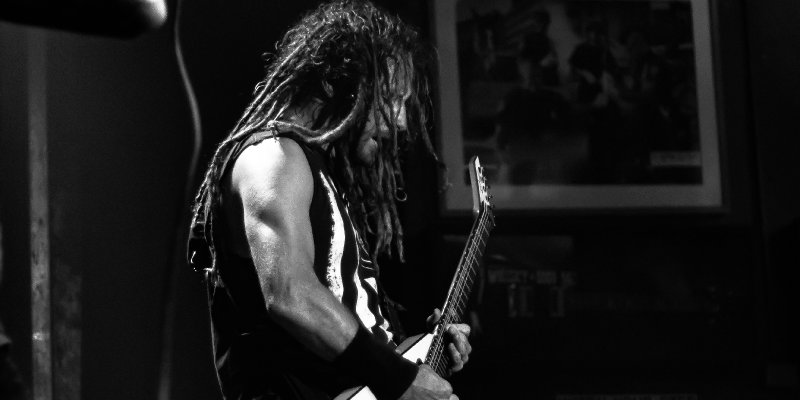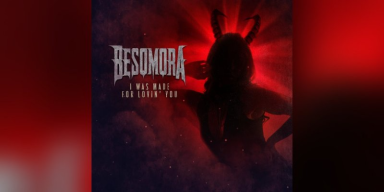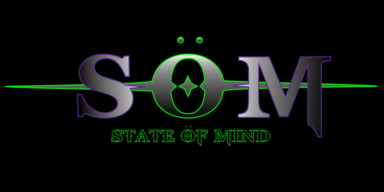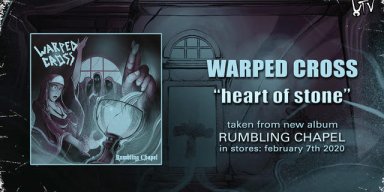
Photo by Diego Ornelas-Tapia on Unsplash
Metal Guitar Techniques: Never-Ending Scales
Often guitar players learn scale and fretboard patterns when they first start out with online guitar lessons . Which is fine as this helps them get going, but eventually you need to memorize your actual notes you are playing. One recent method to help is by picking out a never-ending scale to follow on your own.
Learning the Notes of the Fretboard
There is no specific guitar scale that is called the never-ending scale, the point is that we aren’t dealing with a normal pattern like a hexatonic set. The whole goal is to start getting familiar with where notes exactly are.
On a piano it is very easy to tell what note you are playing, it’s right in front of you! But a guitar is tuned all wonky and not intuitive. The E-A, A-D, D-G, and B to E are 4 steps apart and the G-B are 3 steps. This totally ruins any ability to quickly see easy patterns. This is why some guitarists tune to All Fourths, Fifths, or other open tunings.
These other tunings are fine but most guitars are tuned to standard or a dropped form. So it is wise to just learn the notes for regular EADGBE, and of course any dropped tunings we change accordingly. And just like shredding there is no magic fix for learning the notes of the fretboard. You just have to practice all the time!
Obviously most guitar practice and techniques are suitable for all genres, but for metal we are more focused on shredding and solos so there is simply more need to know where the notes are. Yes, a pattern or tabs are fine to start but eventually proper metal improvisation will need a better grasp on the fretboard.
Using a Never-ending Scale
You will pick the scale you are playing and find it on each string of the guitar. The easiest scale to start with is ABCDEFG, which happens to be A natural minor, a common heavy metal scale. Notice these are the same notes of C Major as Amin is the relative key of C.
These scales with no sharps or flats will be the easiest to start with. Also stick to the first 12 frets at first, as there is only one of each note in an octave this can make it easier. Play an A note on the low bass string and then change a string for each new note, once you hit the high treble string, go back up continuing with the scale notes.
There is no pattern to show of this as the point is to get you to stop and physically find each note. It may be slow at first, and strange, but the key is to get your mind thinking in notes instead of patterns. Soon you will start to remember where you went and you will associate a specific note with that spot.
Next try the C major and repeat the process. It seems a little haphazard at first, but soon these note positions will click. Next move to easy keys like F or G with one flat or one sharp. If you need help finding what the easy keys are, take a look at a comprehensive Circle of Fifths here . Don’t rush the process and repeat it often in practice.
Other Ways of Memorizing the Fretboard
Just remember that there are 12 notes in the scale and so only one of each in the first 12 frets. Pretty soon you will notice things like the 3 rd fret of the A string is C or that the 10 th fret of the G string is an F. Having a tuner out can help this fretboard learning process to verify the note you are on.
There are other ways to learn your notes, one way is to start reading sheet music and playing the specific notes on your guitar. After all, while you are in the process of learning these notes why not learn some more music! Again the Circle of Fifths is your first stop for sheet music, it shows you the sharps and flats on the score.
Another great way to learn notes is to pay attention to your barre chords and know what they are made of. If you know that a C major chord is made up of C, E, and G, those notes will always be present on each barre. Using all these ways to find notes together is your best bet, mix in any never-ending scale along with the other forms.
Remember when the tuning changes, so do the note positions! And you might think, what’s the point of learning Standard if I am playing in another dropped tuning? Well first, it’s fine to practice this technique in any tuning, preferably the one you will use most. But more importantly as you get to know the notes you will get better at seeing their spaces.
Eventually you will reach a point where you can “see” where the notes are. Next when you go back to your patterns you will realize why they change that way in standard tuning. The guitar fretboard is annoying and odd, but it is possible to learn every note.
And one more note learning technique besides a never-ending scale or sheet music, is to check out other instruments. That doesn’t mean you need to buy a piano, mandolin, or a wind instrument. It just helps with the music theory aspect to see how the same 12 notes move. Pretty soon you will start to see the bigger picture and have a better grasp on music. The only instrument worse than the guitar fretboard is the ukulele. It uses reentrant tuning, so the notes do not even go low to high!
The never-ending scale technique is really just a way to get you in note learning mode. As you get better at spotting the notes on the fretboard your heavy metal guitar techniques will start to improve. Mix those in with your other patterns and movements and you will advance in your improvisation and music understanding. Far too many amateur metal guitarists and other musicians do not take the time to truly learn music. It is worth all the time it takes, and it can be pretty quick with some legit online guitar lessons like these .
Reviews - Interviews - Promo - Radio Play
Contact zach@metaldevastationradio.com












